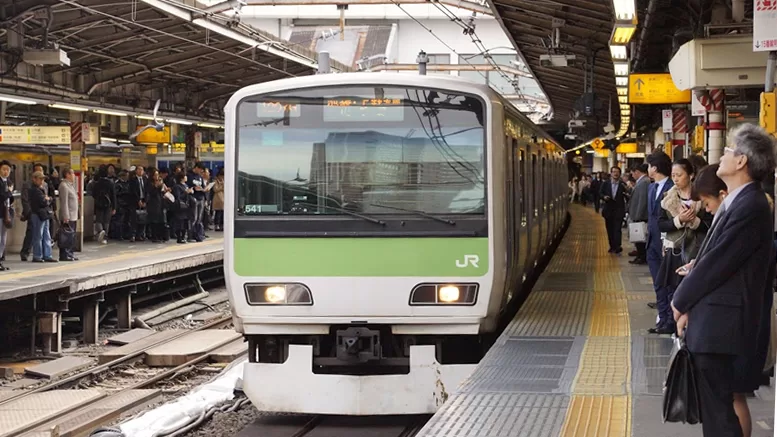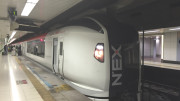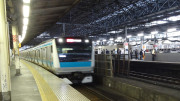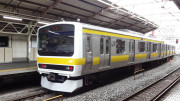For the tourist to Tokyo, the JR Yamanote Rail line is probably the most useful of Tokyo’s rail network. The line goes in a circle with 29 stations along its hour long route.

For tourists visiting Tokyo, the JR Yamanote Line is likely the most useful part of the city’s extensive rail network. This iconic loop line circles central Tokyo, with 29 stations along its route, which takes about an hour to complete.
If a city had a central nervous system, Tokyo’s would undoubtedly be the Yamanote Line. Covering an almost 35-kilometre loop, the Yamanote Line first opened in 1885, and the full loop was completed by 1925. Most Yamanote Line stations interconnect with other lines—these include other JR lines, subway lines, and even privately operated railways. Many of these private railways positioned their stations near a Yamanote Line station, using it as a launch point into the suburbs. This is one reason areas like Shinjuku and Ikebukuro became such massive hubs. In fact, they are now the two busiest railway stations in the world, thanks to their location on the Yamanote Line.
Trains run in both directions, with services every 3 minutes during peak times.
Using Shinjuku as a starting point, here’s a brief overview of the most popular stations for visitors, travelling anti-clockwise:
- Shinjuku: Tokyo’s busiest station, with over 2 million passengers daily. It’s the gateway to the bustling Shinjuku shopping and entertainment district, and is walking distance to the skyscraper district and Omoide Yokocho (“Piss Alley”) restaurant laneway.
- Yoyogi: Close to Meiji Jingu Shrine and Yoyogi Park.
- Harajuku: A hotspot for youth fashion, street culture, and people-watching.
- Shibuya: A major commercial and shopping hub. Famous for its scramble crossing and giant video screens. A great place to transfer to other lines.
- Ebisu: Alight here for Yebisu Garden Place and the beer museum.
- Meguro, Gotanda, and Osaki follow, before arriving at:
- Shinagawa: A transport hub near Sengakuji Temple.
- Takanawa Gateway: A modern, high-tech station opened in time for the Tokyo 2020 Olympics. It also serves the Keihin-Tohoku Line. The surrounding 13-hectare site is undergoing urban renewal, transforming the old railway yard into a new modern precinct that will stretch toward Shinagawa.
- Tamachi: A business district with a tech school and plenty of soba noodle shops.
- Hamamatsucho: Close to the Tokyo Tower (inspired by the Eiffel Tower) and Zojoji Temple. You can also catch the Tokyo Monorail to Haneda Airport from here.
- Shimbashi: Near the Shiodome business district and Hama Rikyu Gardens. You can also transfer here to the Yurikamome Line for access to Odaiba.
- Yurakucho: Best for exploring Ginza and the Imperial Palace.
- Tokyo Station: The main hub for Shinkansen bullet trains, and a short walk to the Marunouchi business district.
- Kanda: A quieter station connecting to the Chuo Line.
- Akihabara: Tokyo’s famed Electronics Town, ideal for tech and anime lovers.
- Okachimachi: Known for its lively shopping street.
- Ueno: Another Shinkansen hub, close to Ueno Park, Tokyo Zoo, and the National Museum.
- Uguisudani, Nippori, Nishi-Nippori, and Tabata—are the next few stations and less relevant for most tourists.
- Komagome: Worth a visit for the Rikugien Gardens, located just south of the station.
- Sugamo and Otsuka follow.
- Ikebukuro: A major shopping and entertainment hub, and one of the busiest train stations in the world.
- Mejiro, Takadanobaba, and Shin-Okubo Korean Town come next, before returning to Shinjuku.
Another important line for tourists is the JR Chūō Line, which cuts across the Yamanote loop. It offers a handy shortcut from Shinjuku and Yoyogi directly to Akihabara, Kanda, or Tokyo Station, and is a great way to save time if you’re travelling across town.
Also on Happy Jappy
JR Chuo Line
Ginza Metro Line
Getting around Tokyo
More local Train and Subway info
JR Shinkansen bullet train
Japan Rail Pass




